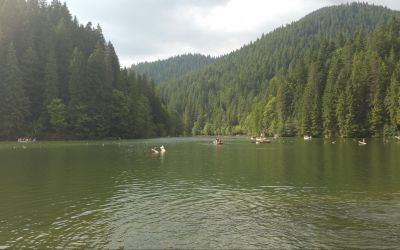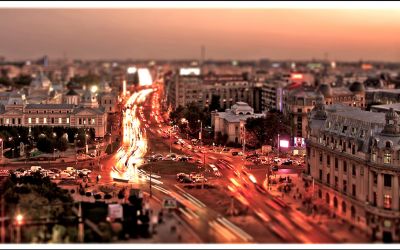In the morning you will discover the city of Brasov. Surrounded by the wooded slopes of the Carpathians, the town was built from the 13th century by the German settlers known as "knows" of Sachsen - Saxons. Guests from Transylvania by the Hungarian king, the Germans - mostly from the region of Luxembourg, the Moselle valley and Franconia - populated from the 11th century the entire southern part of this province, except the mountains, dominated Traditionally by the Latin-speakers called at that time the Vlachs or vlachi, later the Romanians. The Germans left after 800 years, following the invasion of the Red Army, the malpractices of the Communist period and finally the freedom of movement gained by the 1989 Revolution. Only a minority of 0.6% of the population of Romania. On the other hand, what remains is an enormous heritage consisting of hundreds of medieval villages, cities such as Brasov, Sibiu, Sighisoara and, above all, fortified churches endowed with ramparts following the great Mongol invasion of Genghis Khan in Europe in 1241. Today, Brasov is considered the center of alpine tourism in Romania. The old town houses a labyrinth of cobbled streets, medieval buildings, baroque and neoclassical times, ramparts and guard towers, pedestrian streets. Drive to Sambata de Sus Monastery - located at the foothills of the Fagaras Mountains - the highest mountains in Romania. The monastery exists since 17th century and is built in Brancovenesc style - the original architectural style of Romania.Visite and continuing towards Sibiu, which in 2007 was the Cultural Capital of Europe. With a vast medieval center that has been well restored in recent years, and a vibrant cultural life, Sibiu is home to the second museum, Brukenthal Museum, which is open all over the world. Sibiu is the capital of the German minority (Saxon) in Romania.
Time in town.
In the evening - 30 minutes by car to reach the village of Sibiel (Little Sibiu), which is part of an ethnographic area that has always been Romanian, and where the main occupation of peasant women has always been sheep farming . The cheeses from here are still known throughout the country as among the best. Installation in peasant houses and traditional diner.













